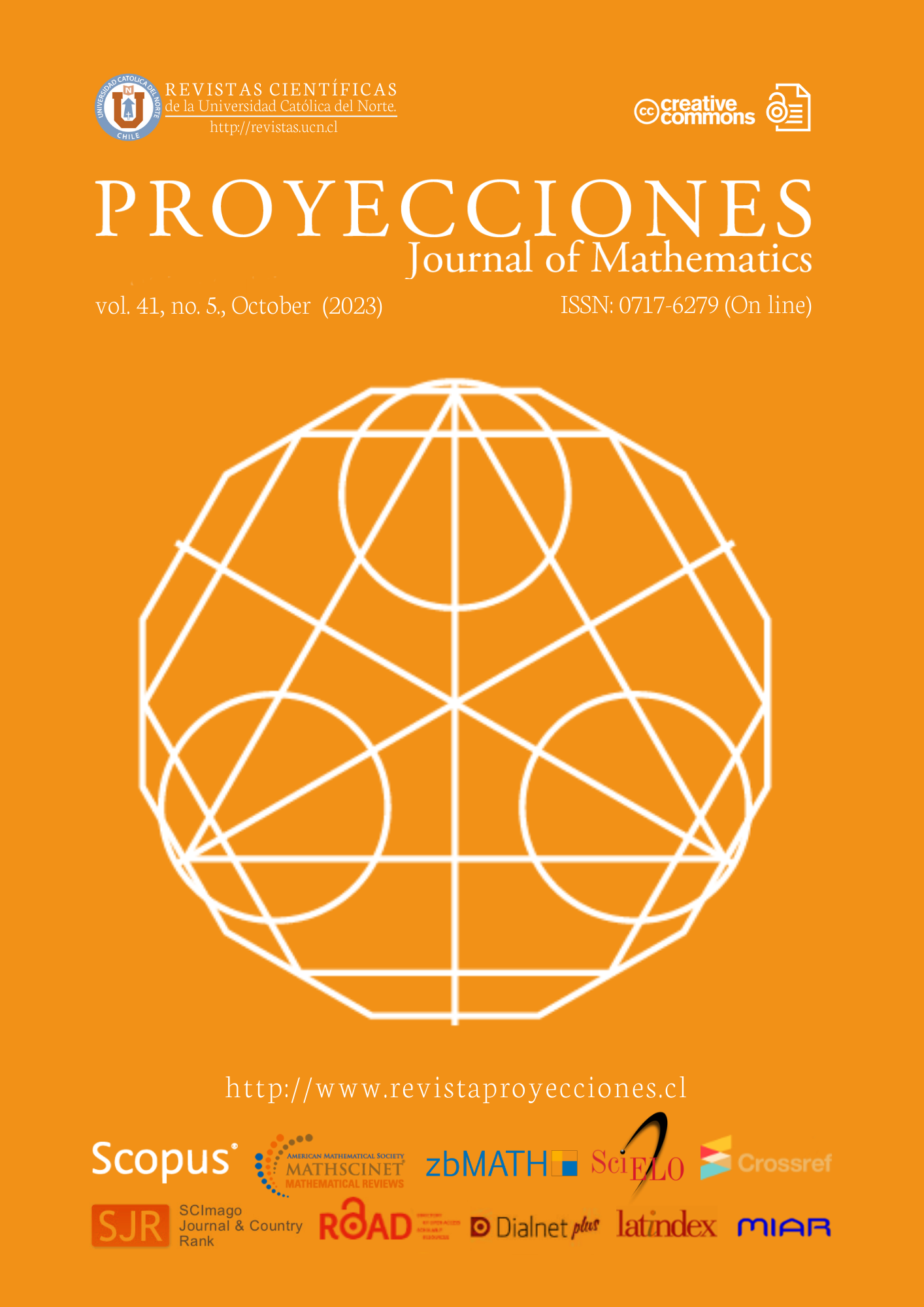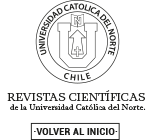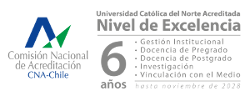Study of some algebraic and topological properties of difference gai sequence of interval numbers
DOI:
https://doi.org/10.22199/issn.0717-6279-5027Keywords:
gai sequence, completeness, solid, symmetry, convergence freeAbstract
Here we have studied some algebraic and topological properties of Difference Gai Sequence of Interval numbers. We study the Completeness, Solidness, Symmetricity and Convergence free.
References
D. Burton and D.J. Coleman, ”Quasi-Cauchy sequences”, The American Mathematical Monthly, vol. 117, no. 4, pp. 328- 333, 2010, MR2011c:40004
A. Esi, ”λ- Sequence spaces of interval numbers”, Applied Mathematics & Information Sciences, vol. 8, no. 3, pp. 1099-1102, 2014. https://doi.org/10.12785/amis/080320
H. Kizmaz, ”On certain sequence spaces”, Canadian Mathematical Bulletin, vol. 24, no. 2, pp. 168-176, 1981. https://doi.org/10.4153/CMB-1981-027-5
R.E. Moore and C.T. Yang, Interval Analysis I. LMSD-285875. California: Lockheed Missiles and Space Company, 1962.
R.E. Moore and C.T. Yang, Theory of an interval algebra and its application to numeric analysis, RAAG Memories II. Tokyo: Gaukutsu Bunken Fukeyu-kai, 1958.
N. Subramanian and U. Misra, ”The Generalised Double Difference of Gai Sequence Spaces”, Fasciculi Mathematici, pp. 155-164, 2010.
M. Şengönül, and A. Ery, ”On the sequence spaces of interval numbers”, Thai Journal of Mathematics, vol. 8, no. 3, pp. 503-510, 2010.
P. V. Subrahmanyam, ”Cesaro summability for fuzzy real numbers”, The Journal of Analysis, vol. 7, pp. 159-168, 1999.
B. C. Tripathy and A. Baruah, ”New type of difference sequence spaces of fuzzy real numbers”, Mathematical Modelling and Analysis, vol. 14, no. 3, pp. 391-397, 2009. https://doi.org/10.3846/1392-6292.2009.14.391-397
B. C. Tripathy and A. Baruah, “Nörlund and Riesz mean of sequences of fuzzy real numbers”, Applied Mathematics Letters, vol. 23, no. 5, pp. 651-655, 2010. https://doi.org/10.1016/j.aml.2010.02.006
B. C. Tripathy and A. Baruah, “Lacunary statically convergent and lacunary strongly convergent generalized difference sequences of fuzzy real numbers”, Kyungpook Mathematical Journal, vol. 50, no. 4, pp. 565-574, 2010. https://doi.org/10.5666/KMJ.2010.50.4.565
B. C. Tripathy, A. Baruah, M. Et and M. Gungor, On almost statistical convergence of new type of generalized difference sequence of fuzzy numbers”, Iranian Journal of Science and Technology, vol. 36, no. 2, pp. 147-155, 2012.
B. C. Tripathy and S. Borgohain, “Some classes of difference sequence spaces of fuzzy real numbers defined by Orlicz function”, Advances in Fuzzy Systems, vol. 2011, Article ID 216414, 6 p., 2011. https://doi.org/10.1155/2011/216414
B. C. Tripathy and A. J. Dutta, On fuzzy real-valued double sequence space 2F l p, Mathematical and Computer Modelling, vol. 46, no. 9-10, pp. 1294-1299, 2007. https://doi.org/10.1016/j.mcm.2007.01.006
B. C. Tripathy and P.C. Das, “On convergence series of fuzzy real numbers”, Kuwait Journal of Science & Engineering, vol. 39, no. 1A, pp. 57-70, 2012.
B. C. Tripathy and P.C. Das, “On the class of fuzzy number sequences bvFp”, Songklanakarin Journal of Science and Technology, vol. 41, no. 4, pp. 934-941, 2019.
B. C. Tripathy and A.J. Dutta, “On I-acceleration convergence of sequences of fuzzy real numbers”, Journal Mathematical Modelling and Analysis, vol. 17, no. 4, pp. 549-557, 2012. https://doi.org/10.3846/13926292.2012.706656
B. C. Tripathy and A. Esi, “A new type of difference sequence spaces”, International Journal of Science & Technology, vol. 1, no. 1, pp. 11-14, 2006.
B. K. Tripathy and S. Nanda, ”Absolute value of fuzzy real numbers and fuzzy sequence spaces”, Journal of Fuzzy Mathematics, vol. 8, pp. 883-892, 2000.
B. C. Tripathy and M. Sen, “Characterization of some matrix classes involving paranormed sequence spaces”, Tamkang journal of mathematics, vol. 37, no. 2, pp. 155-162, 2006, https://doi.org/10.5556/j.tkjm.37.2006.160
L. A. Zadeh, ”Fuzzy sets”, Information and Control, vol. 8, no. 3, pp. 338-353, 1965.
Published
How to Cite
Issue
Section
Copyright (c) 2023 Achyutananda Baruah

This work is licensed under a Creative Commons Attribution 4.0 International License.
-
Attribution — You must give appropriate credit, provide a link to the license, and indicate if changes were made. You may do so in any reasonable manner, but not in any way that suggests the licensor endorses you or your use.
- No additional restrictions — You may not apply legal terms or technological measures that legally restrict others from doing anything the license permits.












